Politics
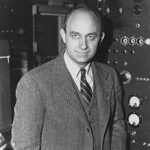
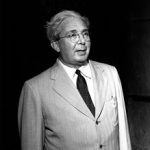 It’s no secret that various governments have had secret projects over the years to create bigger and better weapons of war to be used against enemy governments in the event of a war. I think that there are those who believe that only rogue countries do this sort of thing, but that isn’t so. In the United States, where Enrico Fermi, an Italian physicist and the creator of the world’s first nuclear reactor, and Leó Szilárd a Hungarian-German physicist and inventor; had both emigrated to America, the discovery of the nuclear chain reaction led to the creation of the first man-made reactor, known as Chicago Pile-1, which achieved criticality on December 2, 1942. This work became part of the Manhattan Project, a massive secret U.S. government military project to make enriched uranium and by building large production reactors to produce enriched plutonium for use in the first nuclear weapons. The United States would test an atom bomb in July 1945 with the Trinity test, and eventually two such weapons were used in the atomic bombings of Hiroshima and Nagasaki. Of course, weapons of warfare are not the only use for nuclear power, but they are what most of us think about when we think about going nuclear.
It’s no secret that various governments have had secret projects over the years to create bigger and better weapons of war to be used against enemy governments in the event of a war. I think that there are those who believe that only rogue countries do this sort of thing, but that isn’t so. In the United States, where Enrico Fermi, an Italian physicist and the creator of the world’s first nuclear reactor, and Leó Szilárd a Hungarian-German physicist and inventor; had both emigrated to America, the discovery of the nuclear chain reaction led to the creation of the first man-made reactor, known as Chicago Pile-1, which achieved criticality on December 2, 1942. This work became part of the Manhattan Project, a massive secret U.S. government military project to make enriched uranium and by building large production reactors to produce enriched plutonium for use in the first nuclear weapons. The United States would test an atom bomb in July 1945 with the Trinity test, and eventually two such weapons were used in the atomic bombings of Hiroshima and Nagasaki. Of course, weapons of warfare are not the only use for nuclear power, but they are what most of us think about when we think about going nuclear.
In reality, much more has come from nuclear energy. In August 1945, the pocketbook The Atomic Age, became the first widely distributed account of nuclear energy. It discussed the peaceful future uses of nuclear energy and painted a picture of a future where fossil fuels would go unused. Nobel laureate Glenn Seaborg, who later chaired the Atomic Energy Commission, is quoted as saying “there will be nuclear powered earth-to-moon shuttles, nuclear powered artificial hearts, plutonium heated swimming pools for SCUBA divers, and much more.” Then, on December 20, 1951, came the first light bulbs ever lit by electricity generated by nuclear power at EBR-1 at Argonne National Laboratory West.
Nuclear power is still producing electricity today. The United States has more than 100 reactors, although it creates most of its electricity from fossil fuels and hydroelectric energy. Nations such as Lithuania, France, and Slovakia create almost all of their electricity from nuclear power plants. Uranium is the fuel most widely used to produce nuclear energy. I think most people have heard of the disasters at Chernobyl, April 26, 1986, Kyshtym, September 29, 1957, Three Mile Island, March 28, 1979, and Windscale, October 10, 1957. Some were worse than others, but all were scary situations. I don’t know how I feel about the use of nuclear power as opposed to fossil fuels, hydroelectric energy, or wind energy, because I think that quite possibly each has their place, and that it would be difficult to rely on just one type of fuel.
The United Kingdom, Canada, and the USSR continued to research and develop nuclear industries over the course of the late 1940s and early 1950s. Electricity was first generated by a nuclear reactor on December 20, 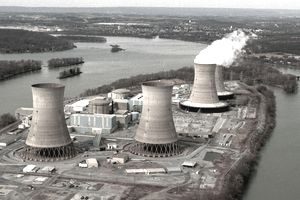 1951, at the EBR-I experimental station near Arco, Idaho, which initially produced about 100 kW. In the United States work was also strongly researched on nuclear marine propulsion, with a test reactor being developed by 1953…eventually, the USS Nautilus, the first nuclear-powered submarine, would launch in 1955. Then, in 1953, President Dwight Eisenhower gave his “Atoms for Peace” speech at the United Nations. In it he emphasized the need to develop “peaceful” uses of nuclear power quickly. The concern was over any further us in war situations. This was followed by the 1954 Amendments to the Atomic Energy Act which allowed rapid declassification of United States reactor technology and encouraged development by the private sector.
1951, at the EBR-I experimental station near Arco, Idaho, which initially produced about 100 kW. In the United States work was also strongly researched on nuclear marine propulsion, with a test reactor being developed by 1953…eventually, the USS Nautilus, the first nuclear-powered submarine, would launch in 1955. Then, in 1953, President Dwight Eisenhower gave his “Atoms for Peace” speech at the United Nations. In it he emphasized the need to develop “peaceful” uses of nuclear power quickly. The concern was over any further us in war situations. This was followed by the 1954 Amendments to the Atomic Energy Act which allowed rapid declassification of United States reactor technology and encouraged development by the private sector.

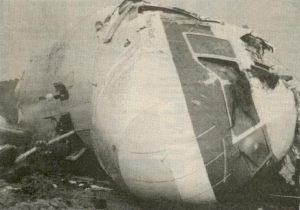 Recently, I became interested is unusual military bases, after coming across on called RAF Rudloe Manor…an English military base that looked, and in fact was an old English manor. Another military base, this one in the United States, in Virginia, near Dulles International Airport, has now come to my attention, but for multiple reasons. Mount Weather Emergency Operations Center is a civilian command facility in the US Commonwealth of Virginia, used as the center of operations for the Federal Emergency Management Agency (FEMA). Also known as the High Point Special Facility (HPSF), its preferred designation since 1991 is “SF”.
Recently, I became interested is unusual military bases, after coming across on called RAF Rudloe Manor…an English military base that looked, and in fact was an old English manor. Another military base, this one in the United States, in Virginia, near Dulles International Airport, has now come to my attention, but for multiple reasons. Mount Weather Emergency Operations Center is a civilian command facility in the US Commonwealth of Virginia, used as the center of operations for the Federal Emergency Management Agency (FEMA). Also known as the High Point Special Facility (HPSF), its preferred designation since 1991 is “SF”.
Mount Weather Emergency Operations Center gained some “fame” for a completely different reason in 1974. December 1, 1974 was a windy, stormy day in the Washington DC area. Trans World Airlines Flight 514 was en route from Indianapolis, Indiana, and Columbus, Ohio, to Washington Dulles International Airport, but was originally supposed to land at Washington National Airport. The Boeing 727-231, registration N54328, was diverted to Dulles when high crosswinds, east at 32 mph and gusting to 56 mph, prevented safe operations on the main north-south runway at Washington National. The flight was being vectored for a non-precision instrument approach to runway 12 at Dulles. Air traffic controllers cleared the flight down to 7,000 feet before clearing them for the approach while not on a published segment. At this point, there was some confusion in the cockpit over whether they were still under a radar-controlled approach segment which would allow them to descend safely, or not. The jetliner began a descent to 1,800 feet, shown on the first checkpoint for the published approach. After reaching 1,800 feet there were some 100 to 200 foot altitude deviations which the flight crew discussed as encountering heavy downdrafts and reduced visibility in snow. Nevertheless, their tower controlled approach had ended.
In the stormy conditions, late on that Sunday morning, the aircraft was in controlled flight, when it impacted a low mountain about thirty miles northwest of its revised destination. That mountain was Mount Weather, Virginia, where the Mount Weather Emergency Operations Center was located. The plane impacted the west slope of Mount Weather at 1,670 feet above sea level at approximately 265 mph. The wreckage was contained within an area about 900 by 200 feet. The evidence of first impact were trees sheared off about 70 feet above the ground…the elevation at the base of the trees was 1,650 feet. All 92 aboard, 85 passengers and seven crew members, were killed. “The wreckage path was oriented along a line 118 degrees magnetic. Calculations indicated that the left wing went down about six degrees as the aircraft passed through the trees and the aircraft was descending at an angle of about one degree. After about five hundred feet of travel through the trees, it struck a rock outcropping at an elevation of about 1,675 feet. Numerous heavy components of the aircraft were thrown forward of the outcropping, and numerous intense post-impact fires broke out which were later extinguished. The mountain’s summit is at 1,754 feet above sea level.”
“The accident investigation board was split in its decision as to whether the flight crew or Air Traffic Control were responsible. The majority absolved the controllers as the plane was not on a published approach segment; the dissenting opinion was that the flight had been radar vectored. Terminology between pilots and controllers differed without either group being aware of the discrepancy. It was common practice at the time for controllers to release a flight to its own navigation with “Cleared for the approach,” and flight crews commonly believed that was also authorization to descend to the altitude at which the final segment of the approach began. No clear indication had been given by controllers to Flight 514 that they were no longer on a radar vector segment and therefore responsible for their own navigation. Procedures were clarified after this accident. Controllers now state, “Maintain (specified altitude) until established on a portion of the approach,” and pilots now understand that previously assigned altitudes prevail until an altitude change is authorized on the published approach segment the aircraft is currently flying. Ground proximity detection equipment was also mandated for the airlines.”
During the NTSB investigation, it was discovered that a United Airlines flight had very narrowly escaped the same fate during the same approach and at the same location only six weeks prior. Apparently, the problem was bigger than it was first thought to be. The crash is also noteworthy, because of the accident location. The undesired attention to the Mount Weather facility, became the unfortunate side effect, because the site was the linchpin of plans implemented by the federal government to ensure continuity in the event of a nuclear war. 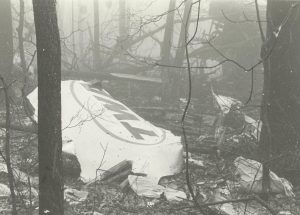
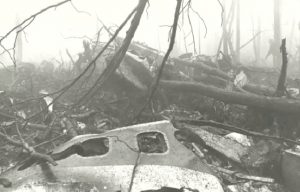 The crash did not damage the facility, since most of its features were underground. Only its underground main phone line was severed, with service to the complex being restored by C&P Telephone within 2½ hours after the crash. Nevertheless, the crash brought to light the possibility of damage to an important facility by a plane crash, which was a distinct possibility due to the flight path of planes landing at Dulles International Airport.
The crash did not damage the facility, since most of its features were underground. Only its underground main phone line was severed, with service to the complex being restored by C&P Telephone within 2½ hours after the crash. Nevertheless, the crash brought to light the possibility of damage to an important facility by a plane crash, which was a distinct possibility due to the flight path of planes landing at Dulles International Airport.
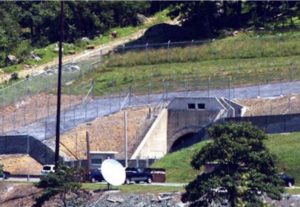 Known as Site R, Raven Rock Mountain Complex is a deep underground facility approved for construction by President Harry S Truman in 1950. The plan was for it to be a relocation site for the Pentagon in times of national emergency. To build the site, they workers had to blast out one half a million cubic yards of greenstone granite rock. The super-hard granite was secretly blasted out and hauled away over a period of ten months, to build five separate three-story buildings deep inside the mountain located along the border between Pennsylvania and Maryland, in Adams County, Pennsylvania. It operates under a number of…almost code names, Site R, AJCC: Alternate Joint Communications Center, ANMCC: Alternate National Military Command Center, NMCC-R: National Military Command Center – Raven Rock, USAG-RR: U.S. Army Garrison – Raven Rock, the Underground Pentagon, the Little Pentagon, the Backup Pentagon, the Rock, and for the old-timers: Harry’s Hole. All are interesting nicknames, for sure.
Known as Site R, Raven Rock Mountain Complex is a deep underground facility approved for construction by President Harry S Truman in 1950. The plan was for it to be a relocation site for the Pentagon in times of national emergency. To build the site, they workers had to blast out one half a million cubic yards of greenstone granite rock. The super-hard granite was secretly blasted out and hauled away over a period of ten months, to build five separate three-story buildings deep inside the mountain located along the border between Pennsylvania and Maryland, in Adams County, Pennsylvania. It operates under a number of…almost code names, Site R, AJCC: Alternate Joint Communications Center, ANMCC: Alternate National Military Command Center, NMCC-R: National Military Command Center – Raven Rock, USAG-RR: U.S. Army Garrison – Raven Rock, the Underground Pentagon, the Little Pentagon, the Backup Pentagon, the Rock, and for the old-timers: Harry’s Hole. All are interesting nicknames, for sure.
Once you are inside, you would not really know that you are underground, because, other than no outside 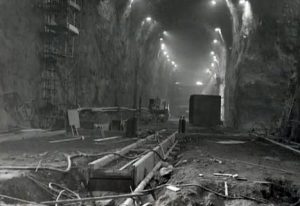 windows, the buildings look like any other office building. The underground complex has roads and perking areas that are big enough to accommodate trucks and buses. The facility is completely self-sufficient, boasting two power plants for electricity, multiple underground water reservoirs and a highly sophisticated ventilation system. It also has a medical and dental clinic, fire department, post office, dining facility, snack bar, dormitories, chapel, barbershop, fitness center, bowling alley, and even a Starbucks. It can accommodate 3,000 people in the event of an emergency, and can operate for at least 30 days in a “buttoned-up” position. Basically the facility is a small city.
windows, the buildings look like any other office building. The underground complex has roads and perking areas that are big enough to accommodate trucks and buses. The facility is completely self-sufficient, boasting two power plants for electricity, multiple underground water reservoirs and a highly sophisticated ventilation system. It also has a medical and dental clinic, fire department, post office, dining facility, snack bar, dormitories, chapel, barbershop, fitness center, bowling alley, and even a Starbucks. It can accommodate 3,000 people in the event of an emergency, and can operate for at least 30 days in a “buttoned-up” position. Basically the facility is a small city.
In the event of a war situation, the United States must be able to have a Continuity of Operations Plan (COOP) for the Office of the Secretary of Defense and the Joint Staff…basically a blueprint for how the government would re-position itself, if a major catastrophe strikes. Should the country find itself in such peril Senior leaders would be flown in by helicopter from the Pentagon and DOD emergency relocation teams all participate in real-life scenarios which test the alert and notification procedures along with the reception, staging, onward  movement, and integration (RSOI) procedures. These include the COOP transportation plans, Site R hasty access procedures, and the integration of mission essential functions within the operating routine of the alternate site, the backup Pentagon. Defense communications and planning would allegedly be handled at the Raven Rock Mountain Complex, but the structure of such a strategy has been hotly debated. Some sites on the internet had posted a “virtual tour” of Site R, but it is not the real site, other than possibly the pictures of the original work being done. Sites like this, that have national security as their top priority, are not something that is usually open to the public for viewing.
movement, and integration (RSOI) procedures. These include the COOP transportation plans, Site R hasty access procedures, and the integration of mission essential functions within the operating routine of the alternate site, the backup Pentagon. Defense communications and planning would allegedly be handled at the Raven Rock Mountain Complex, but the structure of such a strategy has been hotly debated. Some sites on the internet had posted a “virtual tour” of Site R, but it is not the real site, other than possibly the pictures of the original work being done. Sites like this, that have national security as their top priority, are not something that is usually open to the public for viewing.
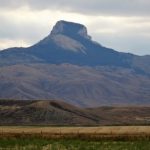
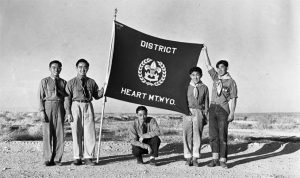 In the middle of a war, the people of a nation become concerned about anyone who might potentially be the enemy, especially if they are living inside the country’s borders. It is really a natural reaction to enemy personnel. After the Japanese attacked Pearl Harbor, the United states became quite concerned about the Japanese immigrants in our country, whether they were here legally or not. Much of the immigration to the United States from Japan began in 1884, when thousands of Japanese arrived in Hawaii to work the sugar cane fields. In the wake of the 1882 Chinese Exclusion Act, which drastically restricted Chinese immigration, Japanese people began arriving and began to prosper and started small businesses or became farmers. Most of them settled along the West Coast, meaning roughly 13,000 people of Japanese descent lived in the Intermountain West prior to World War II. The attack on Pearl Harbor, heightened the level of concern about those people.
In the middle of a war, the people of a nation become concerned about anyone who might potentially be the enemy, especially if they are living inside the country’s borders. It is really a natural reaction to enemy personnel. After the Japanese attacked Pearl Harbor, the United states became quite concerned about the Japanese immigrants in our country, whether they were here legally or not. Much of the immigration to the United States from Japan began in 1884, when thousands of Japanese arrived in Hawaii to work the sugar cane fields. In the wake of the 1882 Chinese Exclusion Act, which drastically restricted Chinese immigration, Japanese people began arriving and began to prosper and started small businesses or became farmers. Most of them settled along the West Coast, meaning roughly 13,000 people of Japanese descent lived in the Intermountain West prior to World War II. The attack on Pearl Harbor, heightened the level of concern about those people.
It was decided that, because their loyalties could not positively be confirmed, the Japanese immigrants needed to be rounded up and put in concentration camps. I suppose this might have seemed similar to what the Germans did to the Jewish people, but the Japanese people were not murdered in the camps, like the Jews were. And so it came to be that the people of Japanese descent from Oregon, Washington and California were incarcerated at the Heart Mountain Relocation Center in Park County, Wyoming, by the executive order of President Franklin Roosevelt. The prisoners were held at the camp from August 12, 1942 to November 10, 1945, which was actually two months after the end of the war with Japan. The camp was populated with 10,000 people at its largest, making it the third largest town in the state at the time.
I have tried to imagine what it must have been like for those Japanese immigrants to be held in the Heart Mountain Relocation Center for as much as 2 years and 3 months. Of course, the illegal immigrants of our time immediately came to my mind, but there is a difference between these people and the illegal immigrants of today. These people were here legally, and most of them had already become citizens. Unfortunately, that did not calm the worried minds of the rest of the people of the United States. Our nation had been attacked, and the attackers looked just like the Japanese immigrants. Precautions had to be taken. I’d like to think that if it were me, in that position, that I would understand why this was happening, but I’m not so sure I would. After all, these people were not criminals. They were hard working Americans, and yet they were for a time…the enemy, or possibly the enemy.
Unfortunately, like many prior immigrant groups, the Japanese faced discrimination. Things aren’t always fair, and people aren’t always treated properly. Starting in the early 20th century, Japanese immigrants, as well as Chinese immigrants, were targeted by Alien Land Laws in western states including Wyoming. These laws prevented the Asian immigrants from buying land. In 1924, the United States Congress passed the Asian Exclusion Act, which all but cut off new immigration from Asia. In response, Japanese Americans formed organizations such as the Japanese American Citizens’ League to help address their shared challenges. Despite 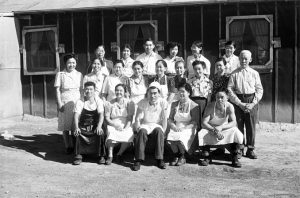 the attempts of Japanese Americans to fit in, some people expressed ongoing skepticism regarding the place of Asians in American society.
the attempts of Japanese Americans to fit in, some people expressed ongoing skepticism regarding the place of Asians in American society.
The Heart Mountain facility consisted of 450 barracks, each containing six apartments, when the first internees arrived on August 12, 1942. The largest apartments were simply single rooms measuring 24 feet by 20 feet. The barracks were covered with tar paper. While each unit was eventually outfitted with a potbellied stove, none had bathrooms. The people all used shared latrines. None of the apartments had kitchens. The residents ate their meals in mess halls. When the people first arrived, a barbed-wire fence to surround the camp was not yet complete. The internees protested the construction of this barrier and caused further work to be delayed. In November 1942, they submitted a petition containing 3,000 signatures to the War Relocation Authority (WRA) Director Dillon Meyer. The fence was completed by December, however, and further emphasized the sense of confinement among the internees. Shortly after the construction of the fence, 32 boys were arrested for sledding in the hills beyond the boundary. In response to the perceived overreaction on the part of the camp administration, Rikio Tomo, a Heart Mountain internee, placed an editorial in the Heart Mountain Sentinel asking for clarification about the internees’ citizenship status and constitutional freedoms. Schools were built at Heart Mountain, including a high school, to accommodate the children. These schools served students from elementary school through high school. Roughly 1500 students attended Heart Mountain High School, which included grades 8-12.
The internees provided most of the labor required to run the Heart Mountain camp, while WRA administrators oversaw its general operations. Wages ranged from $12 per month for unskilled labor to $19 per month for skilled labor, including teachers for the schools and doctors in the camp hospitals. In addition, Heart Mountain internees also worked as manual laborers on farms and ranches in Wyoming and nearby states from Nebraska to Oregon. The WRA administrators encouraged activities emphasizing American civics, such as scouting and adult English classes, as part of what they saw as an Americanization process. Committees composed initially of American-born internees provided much of the day-to-day governance of the camps. While these groups provided some measure of self-determination, they disrupted the generational hierarchy. American-born adults in their 20s and 30s were given a higher political status within the camps than their Japanese-born parents.
In 1943, General George Marshall approved the creation of the Japanese-American combat unit. As a result of the low turnout, the War Department extended the draft to the camps. It was decided that while they were not free to go where they chose, these people were needed to serve their country, so a draft was instituted. After they were drafted into the U.S. Army, soldiers from Heart Mountain occasionally returned to visit their families who were still held there. Somehow that doesn’t seem quite fair to me, and many of the prisoners agreed. They thought they should have been given their constitutional rights back before they were drafted. The organization of draft resistance distinguished Heart Mountain from the other relocation centers. The plan, which was given the endorsement of President Roosevelt, was to create an all-Japanese regiment, consisting of soldiers from a previously existing Hawaiian unit and volunteers from the camps. The response from within the camps fell far short of expectations, partly because of a loyalty questionnaire distributed by the WRA. The WRA form was used to determine eligibility for military service and permanent leave. Many of the questions were considered intrusive by prisoners. Others were not as straightforward as the WRA probably intended. Instead of serving as a neutral tool to determine someone’s suitability for service, the questionnaire further alienated many the men. To me it seems that the WRA was somehow not aware of how racist the entire situation really was. For example, question 27 asked about a person’s willingness to serve in the military. For 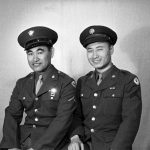
 prisoners who felt service should be contingent upon the restoration of constitutional rights to all Japanese Americans, a simple yes or no answer was insufficient. In each of the camps, the draft became a divisive issue. While some prisoners felt military service was an opportunity to exemplify patriotism, others felt that constitutional rights should be restored before agreeing to mandatory service. I doubt if the situation would have ever really been resolved, except that the war ended.
prisoners who felt service should be contingent upon the restoration of constitutional rights to all Japanese Americans, a simple yes or no answer was insufficient. In each of the camps, the draft became a divisive issue. While some prisoners felt military service was an opportunity to exemplify patriotism, others felt that constitutional rights should be restored before agreeing to mandatory service. I doubt if the situation would have ever really been resolved, except that the war ended.
 A couple of days ago, I wrote a story about the denazification process that took place in post-World War II Germany and in the American concentration camps. while the story inspired thoughts of horror as the German soldiers discovered the truth about the atrocities of Hitler, it also made me a couple of my readers think about events that are far more recent. the feelings that American citizens have against each other in these tumultuous times in which we live. It makes me wonder, just how we got here. Of course, it’s the same way the Nazis got to where they were…hatred.
A couple of days ago, I wrote a story about the denazification process that took place in post-World War II Germany and in the American concentration camps. while the story inspired thoughts of horror as the German soldiers discovered the truth about the atrocities of Hitler, it also made me a couple of my readers think about events that are far more recent. the feelings that American citizens have against each other in these tumultuous times in which we live. It makes me wonder, just how we got here. Of course, it’s the same way the Nazis got to where they were…hatred.
Nevertheless, I think there is a bigger problem in this day and age, because along with the hatred there is a civil war of sorts going on. The political controversy between Republicans and Democrats has taken a turn toward different forms of hatred. My readers cited the recent shootings at a Jewish temple in Pennsylvania, which very much reminds us of the hatred that Hitler had for the Jewish people, but that isn’t all there is to it. Slavery was abolished many years ago,and or many years racism was practically gone in America, then suddenly because of the rhetoric of a president who was set upon stirring up racism again for his own agenda, we are suddenly faced with that kind of hatred again. The hatred doesn’t follow race either. Along with the the racial fighting we have now, came the hatred for certain groups such as the military and the police.
In fact, this latest version of nazi’ism for lack of a better word, seemed to authorize the hatred of anything we didn’t agree with. To top it off, we have video games that make killing seen like a game, and mobs seem like  fun. There are even games played with text messages to bring mobs together to terrorize. People have been so desensitized to death from television, games, and movies, that I’m not even sure that making people sit and watch a movie showing what was happening would really change anything. The news already does that, and we have become used to that too. So, how do we change this present world from one in which hatred is the excepted normal to one that understands the value of life…all life, not just one race or one group. Of course, the only real way to do that is to learn to love each other. Will that stop the political wrangling? Probably not, but if we realize that we can have a difference of opinion and still love each other, maybe we can move in that direction.
fun. There are even games played with text messages to bring mobs together to terrorize. People have been so desensitized to death from television, games, and movies, that I’m not even sure that making people sit and watch a movie showing what was happening would really change anything. The news already does that, and we have become used to that too. So, how do we change this present world from one in which hatred is the excepted normal to one that understands the value of life…all life, not just one race or one group. Of course, the only real way to do that is to learn to love each other. Will that stop the political wrangling? Probably not, but if we realize that we can have a difference of opinion and still love each other, maybe we can move in that direction.
 Everyone knows the horrors of the Nazi regime, but few people can say that while they thought it was all a part of war, until one day they were forced to see it for what it really was…horrible. These soldiers honestly thought that the concentration camps were no different than the prisoner of war camps they were in, but when they saw the truth, it made them sick. They were forced to face the awful truth that their leader was a complete monster…and worse yet, that they could do nothing to stop his tirade. This forced confrontation brought Germans face-to-face with the worst works of the Third Reich. I can’t imagine the horror of finding out that human beings were being murdered in the gas chambers. The absolute horror of it shows on the faces of the prisoners of war in the United States camps, as they compared the treatment they received at our hands, to what the Nazis were doing to the Jewish people.
Everyone knows the horrors of the Nazi regime, but few people can say that while they thought it was all a part of war, until one day they were forced to see it for what it really was…horrible. These soldiers honestly thought that the concentration camps were no different than the prisoner of war camps they were in, but when they saw the truth, it made them sick. They were forced to face the awful truth that their leader was a complete monster…and worse yet, that they could do nothing to stop his tirade. This forced confrontation brought Germans face-to-face with the worst works of the Third Reich. I can’t imagine the horror of finding out that human beings were being murdered in the gas chambers. The absolute horror of it shows on the faces of the prisoners of war in the United States camps, as they compared the treatment they received at our hands, to what the Nazis were doing to the Jewish people.
An important part of keeping moral up in any war is making sure that the people believe that what their nation is doing, is the right thing. To find out that their nation…their leader, Hitler…was involved in the unwarranted killing of human beings, just because these people were a race they did not like, had to have been such a shock…a sickening shock. This forced process was part of the Allied policy known as denazification, which was designed to to purge Germany of the remnants of Nazi rule and rebuild its civil society, infrastructure, and economy. The program included actual visits to nearby concentration camps. Posters displaying dead bodies of prisoners hung in public places, and forced German prisoners of war to view films documenting the Nazis’ treatment of “inferior” people. The German people had to be changed. They had to realize that Hitler’s evil agenda could not continue. The only way to do that was to change the hearts of men. The best way to change the hearts of men is to show them the horrible truth that they have been lied too and taken advantage of.
While such a harsh method designed to facilitate change was necessary, I must think that it was as hard on the Americans as it was on the Germans. I don’t think anyone could easily watch such horrible murders, without feeling something…except maybe Hitler and his serious henchmen. I still believe that the majority of human beings cannot easily stomach blatant hatred, and horrific murder. I can’t say exactly how big an impact the denazification efforts had at that time in history, but I believe that it was huge. The reason is that the German 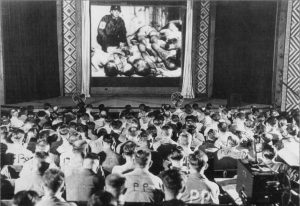 soldiers weren’t necessarily Nazis, and the Holocaust was just one side of the World War II. They were also fighting for territory and power. Strong nationalistic feelings were quite normal back then. Oddly, no conflict existed between not following the Nazis and fighting for the “good of your Fatherland.” Some soldiers were Nazis, some just wanted revenge for Versailles, others wanted to sit at the same table as France and Britain. And many followed because they had no other choice. It was a very strange situation, and one that had to be changed. It may not have been a humane way to bring change, but it was all they could do, so denazification was what they did…and at that time, it worked.
soldiers weren’t necessarily Nazis, and the Holocaust was just one side of the World War II. They were also fighting for territory and power. Strong nationalistic feelings were quite normal back then. Oddly, no conflict existed between not following the Nazis and fighting for the “good of your Fatherland.” Some soldiers were Nazis, some just wanted revenge for Versailles, others wanted to sit at the same table as France and Britain. And many followed because they had no other choice. It was a very strange situation, and one that had to be changed. It may not have been a humane way to bring change, but it was all they could do, so denazification was what they did…and at that time, it worked.
 The American Revolution was a serious embarrassment to Britain, and especially to King George III. The king had to admit that things weren’t going well in the colonies…at least not where Britain was concerned. By now, the colonists had signed the Declaration of Independence that summer, and they were not going to be moved from achieving their goal to be a sovereign nation.
The American Revolution was a serious embarrassment to Britain, and especially to King George III. The king had to admit that things weren’t going well in the colonies…at least not where Britain was concerned. By now, the colonists had signed the Declaration of Independence that summer, and they were not going to be moved from achieving their goal to be a sovereign nation.
On this day, October 31, 1776, the king give a speech to the British Parliament, telling them about the signing of the United States Declaration of Independence and the revolutionary leaders who signed it, saying, “for daring and desperate is the spirit of those leaders, whose object has always been dominion and power, that they have now openly renounced all allegiance to the crown, and all political connection with this country.” I’m sure he felt that the colonists were rebels, who were not worth wasting time on by now, and he  hoped he could walk away from them without losing face any more than he already had. The British never intended for the United States to be anything more than the colones. The king went on to inform Parliament of the successful British victory over General George Washington and the Continental Army at the Battle of Long Island on August 27, 1776, but warned them that, “notwithstanding the fair prospect, it was necessary to prepare for another campaign.” Somehow, the king had the idea that there was still hope to keep the colonies.
hoped he could walk away from them without losing face any more than he already had. The British never intended for the United States to be anything more than the colones. The king went on to inform Parliament of the successful British victory over General George Washington and the Continental Army at the Battle of Long Island on August 27, 1776, but warned them that, “notwithstanding the fair prospect, it was necessary to prepare for another campaign.” Somehow, the king had the idea that there was still hope to keep the colonies.
Despite George III’s harsh words, General William Howe and his brother, Admiral Richard Howe, still hoped to convince the Americans to rejoin the British empire in the wake of the colonists’ humiliating defeat at the Battle of Long Island. They hoped to do 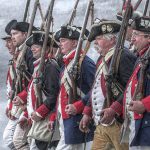 thing peacefully, but that was just not to be. The British could easily have prevented Washington’s retreat from Long Island and captured most of the Patriot officer corps, including the commander in chief. However, instead of forcing the former colonies into submission by executing Washington and his officers as traitors, the Howe brothers let them go with the hope of swaying Patriot opinion towards a return to the mother country. The Howe brothers’ attempts at negotiation failed, and the War for Independence dragged on for another four years, until the formal surrender of the British to the Americans on October 19, 1781, after the Battle of Yorktown. The freedom of the United States was not going to be taken from them…and that was a serious embarrassment to Britain.
thing peacefully, but that was just not to be. The British could easily have prevented Washington’s retreat from Long Island and captured most of the Patriot officer corps, including the commander in chief. However, instead of forcing the former colonies into submission by executing Washington and his officers as traitors, the Howe brothers let them go with the hope of swaying Patriot opinion towards a return to the mother country. The Howe brothers’ attempts at negotiation failed, and the War for Independence dragged on for another four years, until the formal surrender of the British to the Americans on October 19, 1781, after the Battle of Yorktown. The freedom of the United States was not going to be taken from them…and that was a serious embarrassment to Britain.
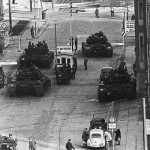 It seems there is always talk of the Third World War coming, and what might set it off. Most people hope that it stays all talk, because the weapons that are available these days could potentially wipe the human race off the planet, or at the very least, wipe whole nations off the map. Sometimes I wonder how we have avoided it so far, considering all the hate in the world today. Somehow our world leaders have held it off…for now. Nevertheless, there have been times when we have come very close to the last straw that would bring World War III. For 16 hours, between October 27 and October 28, 1961, at the height of the Cold War, US and Soviet tanks faced each other in divided Berlin in an action that brought the two superpowers closer to kicking off a third world war than in any other cold-war confrontation, with the exception of the Cuban missile crisis one year later. It was a very heated time in history.
It seems there is always talk of the Third World War coming, and what might set it off. Most people hope that it stays all talk, because the weapons that are available these days could potentially wipe the human race off the planet, or at the very least, wipe whole nations off the map. Sometimes I wonder how we have avoided it so far, considering all the hate in the world today. Somehow our world leaders have held it off…for now. Nevertheless, there have been times when we have come very close to the last straw that would bring World War III. For 16 hours, between October 27 and October 28, 1961, at the height of the Cold War, US and Soviet tanks faced each other in divided Berlin in an action that brought the two superpowers closer to kicking off a third world war than in any other cold-war confrontation, with the exception of the Cuban missile crisis one year later. It was a very heated time in history.
Washington and its British and French allies had failed to stop the Russians from building the Berlin Wall in August of 1961. By October, East German officials began to deny US diplomats the unhindered access to East Berlin that they were required to allow as part of the agreement with Moscow on the postwar occupation of Germany. Then, on 22 October, E Allan Lightner Jr, the senior US diplomat in West Berlin, was stopped by East German border guards on his way to the state opera house in East Berlin. The East Germans demanded to see his passport, which he insisted only Soviet officials had the right to check. The situation grew more heated with this exchange. Lightner was forced to turn back.
General Clay, who was an American hero of the 1948-1949 Berlin Airlift was sent by Washington to deal with the Russians after the erection of the Berlin Wall. He gave orders that the next American diplomat entering East Berlin be escorted by armed US army military police in jeeps. The maneuver succeeded, but the East Germans continued to attempt to assert their claim to control western allied officials entering East Berlin. Never one to suffer defeat easily, Clay ordered American M48 tanks to head for Checkpoint Charlie. There they stood, some 80 yards from the border, noisily racing their engines and sending plumes of black smoke into the night air. Alarmed by the apparent threat, Moscow, with the approval of the Soviet leader, Nikita Khrushchev, sent an equal number of Russian T55 tanks rumbling to face down the Americans. They too ground to a halt some 80 yards from the East/West Berlin border and, as with the US tanks they faced, stayed there for 16 hours.
American officials were becoming more and more alarmed by the potential consequences. General Clay was quickly reminded by Washington that Berlin was not so “vital” an interest to be worth risking a conflict with Moscow. President Kennedy approved the opening of a back channel with the Kremlin in order to defuse the situation that had blown up. As a result, the Soviets pulled back one of their T55s from the eastern side of the border at Friedrichstrasse and minutes later an American M48 also left the scene. That was how it went until all the tanks were withdrawn. General Clay’s reputation among West Berliners rose, but not so much his warrior capabilities as far as the united States was concerned. Khrushchev had been equally uninterested in risking a 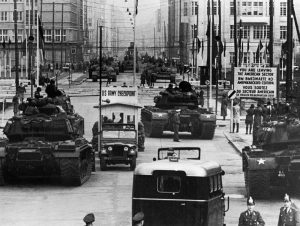 battle over Berlin. In return for Kennedy’s assurance that the west had no designs on East Berlin, the Soviet leader tacitly recognised that allied officials and military personnel would have unimpeded access to the East German capital. From that point on, the western allies freely dispatched diplomats and military personnel to attend the opera and theater in East Berlin. Soviet diplomats, too, attended functions in West Berlin and sent Volga limousines packed with Soviet military police on patrol to West Berlin. The elaborate routine served to prove that the Four Power status of the city was intact. It was faithfully observed until the Wall fell in 1990. they weren’t as eager to start World War III as they thoughts they were.
battle over Berlin. In return for Kennedy’s assurance that the west had no designs on East Berlin, the Soviet leader tacitly recognised that allied officials and military personnel would have unimpeded access to the East German capital. From that point on, the western allies freely dispatched diplomats and military personnel to attend the opera and theater in East Berlin. Soviet diplomats, too, attended functions in West Berlin and sent Volga limousines packed with Soviet military police on patrol to West Berlin. The elaborate routine served to prove that the Four Power status of the city was intact. It was faithfully observed until the Wall fell in 1990. they weren’t as eager to start World War III as they thoughts they were.
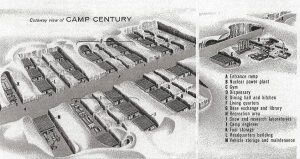 When I think about secrets, nothing very sinister comes to my mind, but when it comes to national or world secrets, maybe we should think a little differently. Of course, not every world or national secret is sinister, but some can be pretty odd. I don’t claim to be privy to any current national security secrets, but I’m finding out some from the past. There were some secrets that most people don’t know about, and some that almost seemed like science fiction. In 1959, the United States used to have a small underground city in the North Pole called Camp Century. It looked a lot like the rebel base on Hoth, which is the sixth planet in the remote system of the same name, and was the site of the Rebel Alliance’s Echo Base, as Star Wars fans would already know. Hoth is a world of snow and ice, surrounded by numerous moons, and home to deadly creatures like the Wampanoag…a cross between a polar bear and a Sasquatch, in looks anyway. Of course, that isn’t what Camp Century really was.
When I think about secrets, nothing very sinister comes to my mind, but when it comes to national or world secrets, maybe we should think a little differently. Of course, not every world or national secret is sinister, but some can be pretty odd. I don’t claim to be privy to any current national security secrets, but I’m finding out some from the past. There were some secrets that most people don’t know about, and some that almost seemed like science fiction. In 1959, the United States used to have a small underground city in the North Pole called Camp Century. It looked a lot like the rebel base on Hoth, which is the sixth planet in the remote system of the same name, and was the site of the Rebel Alliance’s Echo Base, as Star Wars fans would already know. Hoth is a world of snow and ice, surrounded by numerous moons, and home to deadly creatures like the Wampanoag…a cross between a polar bear and a Sasquatch, in looks anyway. Of course, that isn’t what Camp Century really was.
When Camp Century began its life, it was as a scientific outpost located hundreds of feet beneath a Greenland iceberg. From the surface, it looked like nothing more than an ominous snow-covered pyramid. But below, it was gigantic. The base was powered by an underground nuclear reactor, and at one point, is said to have housed a staff of 200. It was a self-contained city, complete with a gym, a chapel, a library, hobby shops and  even a movie theater. I wonder what kinds of movies they watched…movies about the outside world, and in summer no doubt. The plan was for scientific experiments to be conducted there, but as sometimes happens, the military decided it could be better used as a base for their own experiments…namely blowing things up. I suppose they assumed that there was little chance of anyone getting hurt, because of the remoteness of the base. The best kept secrets exist here, and I don’t think I have a big problem with that. So, to recap: The United States had a 200-person nuclear-powered outpost located beneath the ice of the North Pole, where one of their primary objectives was to drill as deep into the unforgiving, ancient ice as possible. Now, that sounds scary.
even a movie theater. I wonder what kinds of movies they watched…movies about the outside world, and in summer no doubt. The plan was for scientific experiments to be conducted there, but as sometimes happens, the military decided it could be better used as a base for their own experiments…namely blowing things up. I suppose they assumed that there was little chance of anyone getting hurt, because of the remoteness of the base. The best kept secrets exist here, and I don’t think I have a big problem with that. So, to recap: The United States had a 200-person nuclear-powered outpost located beneath the ice of the North Pole, where one of their primary objectives was to drill as deep into the unforgiving, ancient ice as possible. Now, that sounds scary.
The military took over in about 1960 and converted Camp Century into a giant ice-bound missile silo. Called Project Iceworm, the goal was to store approximately 600 nuclear missiles in the base, giving the United States a nice, secret little nuclear facility right next to Soviet Russia. Luckily for Russia, technical problems led to the whole mission being scrapped, because maintaining the tunnels was a constant chore. Every month, 120 tons of ice had to be removed to maintain the tunnels. The whole site collapsed within the that decade. Apparently, they worked harder at keeping the tunnels cleared, than at any experiment, or missile setup that they did.
The unites States Department of Defense told the Danish government that the “official purpose” of Camp Century was to test various construction techniques under Arctic conditions, explore practical problems with a semi-mobile nuclear reactor, as well as supporting scientific experiments on the  icecap. The process involved cutting a total of 21 trenches and covering them with arched roofs, within which prefabricated buildings were erected. With a total length of 1.9 mi, these tunnels contained a basically a small town, the total population of which was around 200. From 1960 until 1963 the electricity supply was provided by means of the world’s first mobile/portable nuclear reactor, designated PM-2A and designed by Alco for the United States Army. Water was supplied by melting glaciers and tested to determine whether germs such as the plague were present. Once it was cleared, they were able to use it. Nevertheless, fraught with trouble from the start, it proved a better idea to close it down.
icecap. The process involved cutting a total of 21 trenches and covering them with arched roofs, within which prefabricated buildings were erected. With a total length of 1.9 mi, these tunnels contained a basically a small town, the total population of which was around 200. From 1960 until 1963 the electricity supply was provided by means of the world’s first mobile/portable nuclear reactor, designated PM-2A and designed by Alco for the United States Army. Water was supplied by melting glaciers and tested to determine whether germs such as the plague were present. Once it was cleared, they were able to use it. Nevertheless, fraught with trouble from the start, it proved a better idea to close it down.
 When the colonists left England to form America, they were like the younger sibling, at least when it came to language and much of how they ran the country. Nevertheless, like that younger sibling, things began to change pretty quickly. Part of the change was due simply to distance. When you don’t hear a language all the time, you begin to vary in your own speech. I didn’t really realize there was such a difference between American English and British English, other than the accent of course. Still, I noticed that more and more forms were asking which of the two I spoke. I always thought that it was an odd question, because English is English…right? Well, the correct answer is…wrong!! And when I thought about it, I knew that to be true.
When the colonists left England to form America, they were like the younger sibling, at least when it came to language and much of how they ran the country. Nevertheless, like that younger sibling, things began to change pretty quickly. Part of the change was due simply to distance. When you don’t hear a language all the time, you begin to vary in your own speech. I didn’t really realize there was such a difference between American English and British English, other than the accent of course. Still, I noticed that more and more forms were asking which of the two I spoke. I always thought that it was an odd question, because English is English…right? Well, the correct answer is…wrong!! And when I thought about it, I knew that to be true.
The changes began almost immediately after the first Englishman set foot on American soil. It all started with “Americanisms.” These “Americanisms” have been created or changed from other English terms to produce a language that differs from our forefathers, signifying our uniqueness and independence. I’m sure our founders were rather pleased with themselves with this process, if they realized it at all. By the time of the first United States census, in 1790, there were four million Americans, 90% of whom were descendants of English colonists. When I think of the speed of that growth, it strikes me as phenomenal to say the least. Because of the large English background, there was no question that our official native language would be “English,” but it would not be the same as that spoken in Great Britain. “Americanism” means a word or expression that originated in the United States. The term includes outright coinages and foreign borrowings which first became “English” in the United States, as well as older terms used in new senses first given them in American usage.
In fact, by 1720, the colonists knew that we did not speak the same language as the people in England. The most obvious reason was, of course, the sheer distance from England. Nevertheless, that was not the only  reason. Over the years, many words were borrowed from the Native Americans, as well as other immigrants from France, Germany, Spain, and other countries. We had to communicate with the people around us too, and other words that became obsolete “across the pond,” continued to be utilized in the colonies. In other cases, words simply had to be created in order to explain the unfamiliar landscape, weather, animals, plants, and living conditions that these early pioneers encountered. These things might not have existed in England.
reason. Over the years, many words were borrowed from the Native Americans, as well as other immigrants from France, Germany, Spain, and other countries. We had to communicate with the people around us too, and other words that became obsolete “across the pond,” continued to be utilized in the colonies. In other cases, words simply had to be created in order to explain the unfamiliar landscape, weather, animals, plants, and living conditions that these early pioneers encountered. These things might not have existed in England.
By 1756, the English would make the first “official” reference to the “American dialect.” Samuel Johnson made note of it a year after he published his Dictionary of the English Language. Johnson’s use of the term “American dialect” was not meant to simply explain the differences, but rather, was intended as an insult. It was rather like calling our language the “low class” version of the English language. Remember if you will, that there were those who did not think the United States should ever be a sovereign nation. Years earlier…as early as 1735, the English were calling our language “barbarous,” and referred to our “Americanisms” as barbarisms. The English sneered at our language, something that continued for more than a century after the Revolutionary War, as they laughed and condemned as unnecessary, hundreds of American terms and phrases.
Our newly independent Americans, were proud of their “new” American language, wearing it, as a badge of independence. In 1789, Noah Webster wrote in his Dissertations on the English Language: “The reasons for American English being different than English English are simple: As an independent nation, our honor requires us to have a system of our own, in language as well as government.” Our leaders, including Thomas Jefferson and Benjamin Rush, agreed. It was not only good politics, it was sensible. The feelings of the “rest of the world” didn’t matter. The language changed even more during the western movement as Native American and  Spanish words became a part of our language.
Spanish words became a part of our language.
In 1923, the State of Illinois General Assembly, passed the act stating in part: “The official language of the State of Illinois shall be known hereafter as the “American” language and not as the “English” language.” A similar bill was also introduced in the U.S. House of Representatives the same year but died in committee. Now, after centuries of forming our “own” language, the English and American versions are once again beginning to blend as movies, songs, electronics, and global traveling bring the two “languages” closer together once again.

